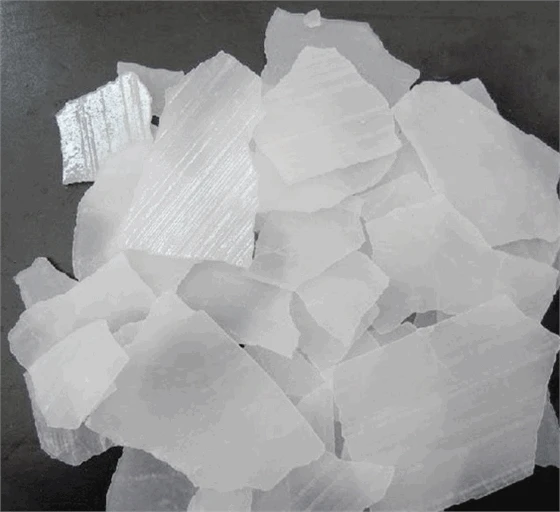



Comparing Sodium Bisulfate and Muriatic Acid for Effective Water Treatment Solutions
Understanding Sodium Bisulfate and Muriatic Acid Applications and Comparisons
Introduction
In the world of chemistry and everyday applications, sodium bisulfate and muriatic acid (also known as hydrochloric acid) are two important substances. While both are widely used in various industries and households, they serve different purposes and possess unique attributes. In this article, we will delve into the properties, applications, and safety considerations associated with sodium bisulfate and muriatic acid.
Sodium Bisulfate An Overview
Sodium bisulfate, chemically represented as NaHSO₄, is a white, crystalline powder that is hygroscopic and soluble in water. It is often used as a pH adjuster in swimming pools, as it effectively lowers the pH of the water when added. In addition to swimming pools, sodium bisulfate finds applications in various other sectors, including the food industry as a food additive and in the cleaning industry as a descaling agent. Its mild acidic properties make it suitable for applications that require gentle yet effective solutions.
In the food industry, sodium bisulfate is utilized as a preservative to maintain the quality and freshness of certain products. It is also used in baking as a leavening agent. Unlike muriatic acid, sodium bisulfate is considered safer to handle and is less corrosive, making it a more favorable option for consumers.
Muriatic Acid An Overview
Muriatic acid, or hydrochloric acid (HCl), is a strong, colorless acid with potent cleaning and etching capabilities. It is widely used in the construction industry for cleaning masonry surfaces and in the manufacturing of various chemicals. Due to its corrosive nature, muriatic acid must be handled with caution, as it can cause severe burns and damage to materials and surfaces.
In addition to construction, muriatic acid finds its place in swimming pool maintenance. It is often used to lower pH levels and remove stubborn stains from pool surfaces. However, its strong acidic nature requires careful dosage and monitoring to avoid damaging pool liners or equipment.
Comparative Analysis
sodium bisulfate or muriatic acid

When comparing sodium bisulfate and muriatic acid, one of the key distinctions lies in their acidity and the way they interact with materials. Sodium bisulfate is a mild acid, making it safer for general use, especially in household applications. It poses minimal risks when handled appropriately, while muriatic acid necessitates strict safety measures, including gloves, goggles, and proper ventilation due to its corrosive properties.
In terms of pH adjustment, both substances serve similar purposes. However, sodium bisulfate is often preferred in residential swimming pools because it is less damaging to pool equipment and surroundings than muriatic acid. Additionally, sodium bisulfate's delayed action allows for a more controlled pH adjustment, reducing the risk of sudden changes that could stress sensitive aquatic life.
Application in Water Treatment
Sodium bisulfate especially shines in water treatment applications. It is commonly used to dechlorinate swimming pool water before draining, helping to mitigate environmental impact. The use of sodium bisulfate in these settings highlights its beneficial properties, as it helps to maintain water quality without the negative consequences associated with stronger acids like muriatic acid.
Safety Considerations
Safety is paramount when dealing with any chemical substance. Sodium bisulfate, while still requiring proper handling, poses fewer risks compared to muriatic acid. For users of muriatic acid, it is essential to wear protective gear, store the acid in a secure location away from incompatible substances, and follow all safety guidelines outlined on the product label.
In contrast, sodium bisulfate containers typically require less stringent safety measures, making it a more user-friendly option for non-professionals. However, caution should still be exercised, as ingestion or prolonged contact can lead to irritation.
Conclusion
In summary, both sodium bisulfate and muriatic acid serve essential roles across various applications, from swimming pools to food preservation and industrial cleaning. While sodium bisulfate is characterized by its mild acidity and safety, muriatic acid is a powerful cleaning agent that requires careful handling. By understanding the properties and applications of these two substances, users can make informed choices that suit their needs while ensuring safety and effectiveness in their specific contexts.
-
Why Sodium Persulfate Is Everywhere NowNewsJul.07,2025
-
Why Polyacrylamide Is in High DemandNewsJul.07,2025
-
Understanding Paint Chemicals and Their ApplicationsNewsJul.07,2025
-
Smart Use Of Mining ChemicalsNewsJul.07,2025
-
Practical Uses of Potassium MonopersulfateNewsJul.07,2025
-
Agrochemicals In Real FarmingNewsJul.07,2025
-
Sodium Chlorite Hot UsesNewsJul.01,2025










